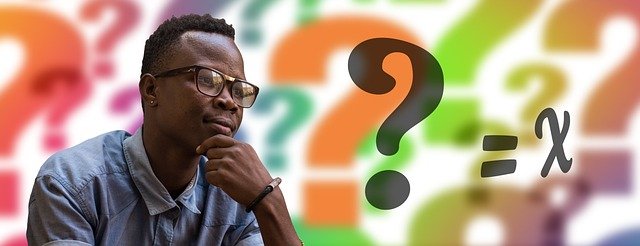What Secrets Do 3D Puzzles Reveal About Problem-Solving Skills?
Three-dimensional puzzles have surged in popularity beyond mere entertainment, revealing themselves as powerful cognitive development tools. From intricate architectural replicas to complex geometric shapes, these tactile challenges engage our minds in ways that traditional activities cannot. As we manipulate pieces and visualize solutions, our brains form new neural pathways that enhance problem-solving capabilities across various aspects of life. But what exactly happens in our minds when we tackle these dimensional challenges?

The Cognitive Benefits of Engaging with 3D Puzzles
When you pick up a 3D puzzle, your brain immediately shifts into a different operational mode. Unlike passive activities such as watching television, puzzle-solving activates multiple cognitive processes simultaneously. Working memory gets a significant boost as you must mentally track numerous pieces and their potential positions. Executive function improves as you plan multi-step strategies to reach your solution. Research has shown that regular engagement with spatial puzzles can strengthen neural connections associated with logical reasoning and analytical thinking.
Additionally, 3D puzzles stimulate brain activity in regions responsible for concentration and focus. The sustained attention required to complete complex puzzles trains the mind to resist distractions—a valuable skill in our notification-filled digital world. For children, these benefits can be particularly profound, as their developing brains form stronger connections through hands-on puzzle play, potentially setting the foundation for advanced academic performance in STEM subjects later in life.
How 3D Puzzles Enhance Critical Thinking Abilities
Critical thinking involves analyzing information, evaluating options, and making reasoned judgments—skills directly exercised when solving 3D puzzles. Each puzzle presents a unique challenge that requires assessment from multiple angles. When faced with a complicated 3D structure, solvers must break down the overall goal into manageable sub-problems, identify patterns, and test hypotheses about piece placement.
The trial-and-error process inherent in puzzle-solving reinforces resilience and adaptability. When a solution attempt fails, puzzle enthusiasts learn to reassess their approach rather than give up. This persistence in the face of challenges translates to improved problem-solving in real-world scenarios. Studies examining problem-solving capabilities have found that regular puzzle-solvers demonstrate enhanced ability to approach complex issues methodically, considering alternatives before committing to a solution path—an invaluable skill in academic, professional, and personal contexts.
Exploring the Connection Between 3D Puzzles and Creativity
While 3D puzzles might seem restrictive with their predetermined solutions, they actually foster creative thinking in surprising ways. The mental flexibility required to visualize pieces fitting together from different angles encourages divergent thinking patterns. This mental agility transfers to other creative endeavors, where seeing multiple possibilities becomes second nature.
Many designers, architects, and engineers credit early experiences with three-dimensional puzzles for developing their spatial creativity. The ability to mentally rotate objects and envision transformations forms the foundation of innovative design thinking. Interestingly, puzzle-solving activates brain regions associated with both logical reasoning and creative ideation, suggesting these seemingly opposite cognitive functions are actually deeply interconnected. For adults looking to maintain cognitive flexibility, 3D puzzles offer an accessible way to exercise these creative neural pathways even as we age.
The Role of Spatial Awareness in Problem-Solving with 3D Puzzles
Spatial awareness—our ability to understand objects in relation to ourselves and other objects—is perhaps the most obviously developed skill when engaging with 3D puzzles. This cognitive ability involves mentally manipulating objects, understanding orientation, and visualizing how components interact in three-dimensional space. Strong spatial reasoning correlates with achievement in mathematics, science, and engineering disciplines.
When working with 3D puzzles, we constantly practice mental rotation, spatial perception, and spatial visualization. These skills have been linked to improved performance in geometry, calculus, physics, and chemistry. Research from cognitive science demonstrates that spatial reasoning is not a fixed ability but rather a skill set that can be significantly improved through consistent practice. Regular engagement with 3D puzzles has been shown to enhance performance on standardized tests measuring spatial abilities, with improvements persisting long after the initial training period.
Expert Insights on Developing Problem-Solving Skills Through Puzzles
Neuroscientists and educational psychologists increasingly recommend 3D puzzles as tools for cognitive development. Dr. Nora Newcombe, a renowned spatial cognition researcher, notes that “spatial thinking is not just an innate ability but a collection of skills that can be improved with practice.” Her research demonstrates how puzzle activities correlate with improved mental rotation abilities and mathematics performance in students of all ages.
Educational experts point to the value of incorporating 3D puzzles into STEM education programs. The hands-on nature of physical puzzles provides a tangible way to understand abstract concepts in geometry and engineering. Dr. Susan Levine’s work at the University of Chicago shows that early spatial play, including puzzle-solving, predicts later mathematical achievement. For adults, puzzles offer neuroprotective benefits, with studies suggesting regular cognitive challenges may help maintain mental acuity and potentially reduce risk factors associated with cognitive decline.
Popular 3D Puzzles and Their Specific Cognitive Benefits
Different types of 3D puzzles offer unique cognitive challenges and benefits. Understanding these differences can help you select puzzles that target specific skills you wish to develop.
| Puzzle Type | Primary Cognitive Benefits | Difficulty Level | Price Range |
|---|---|---|---|
| Rubik’s Cube | Sequential thinking, algorithm mastery | Beginner to expert | $8-$40 |
| Architectural Models | Spatial visualization, patience, attention to detail | Intermediate | $15-$100 |
| Metal Disentanglement Puzzles | Logical reasoning, persistence | Intermediate to advanced | $10-$30 |
| 3D Crystal Puzzles | Visual-spatial reasoning, fine motor skills | Beginner to intermediate | $12-$35 |
| Wooden Brain Teasers | Strategic planning, creative problem-solving | Varies widely | $5-$50 |
Prices, rates, or cost estimates mentioned in this article are based on the latest available information but may change over time. Independent research is advised before making financial decisions.
The beauty of 3D puzzles lies in their ability to challenge us while providing a rewarding sense of accomplishment. Whether you’re a student developing fundamental cognitive skills, a professional looking to maintain mental sharpness, or a retiree interested in cognitive health, 3D puzzles offer accessible cognitive exercise with tangible benefits. The skills developed—spatial reasoning, critical thinking, persistence, and creative problem-solving—extend far beyond the puzzle table, influencing how we approach challenges in all areas of life.




